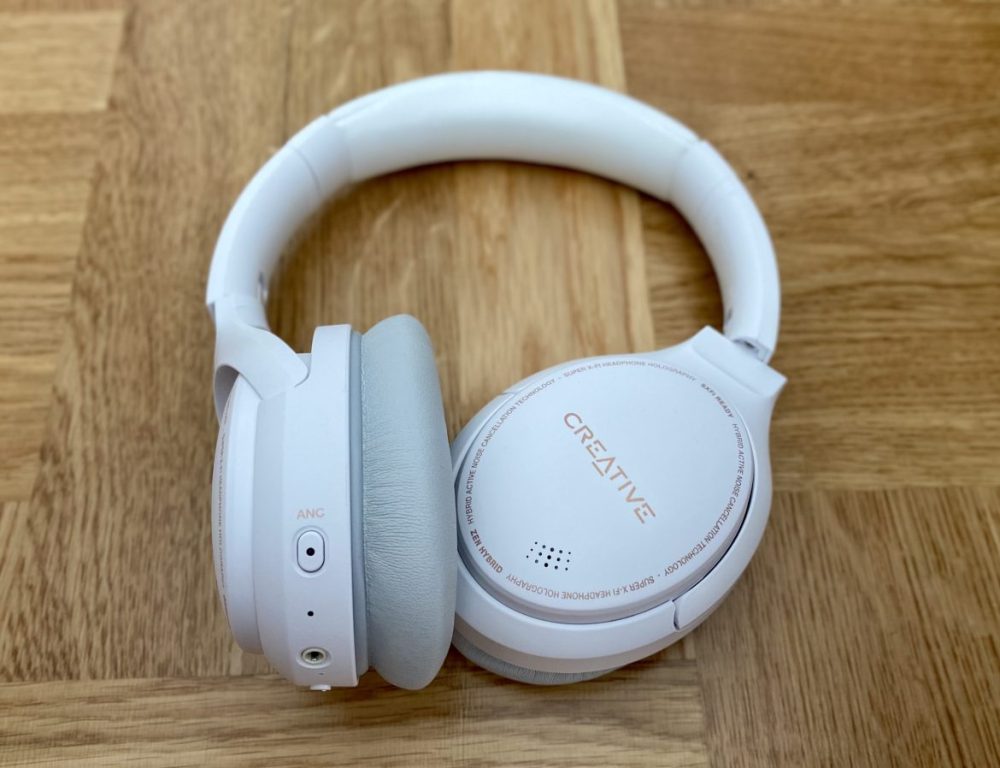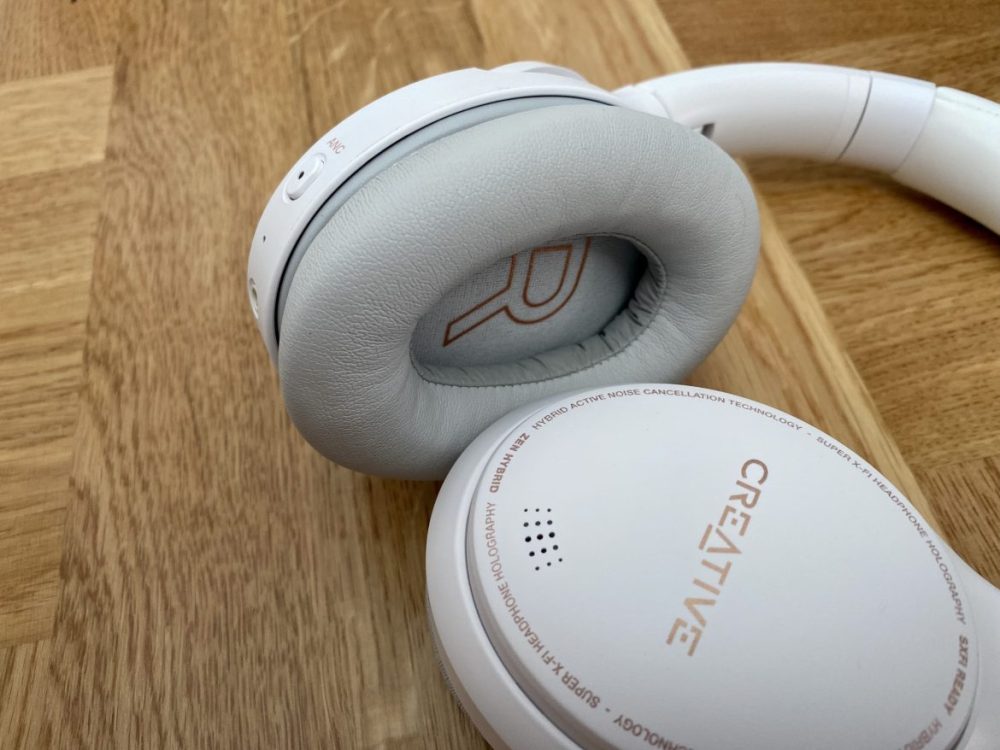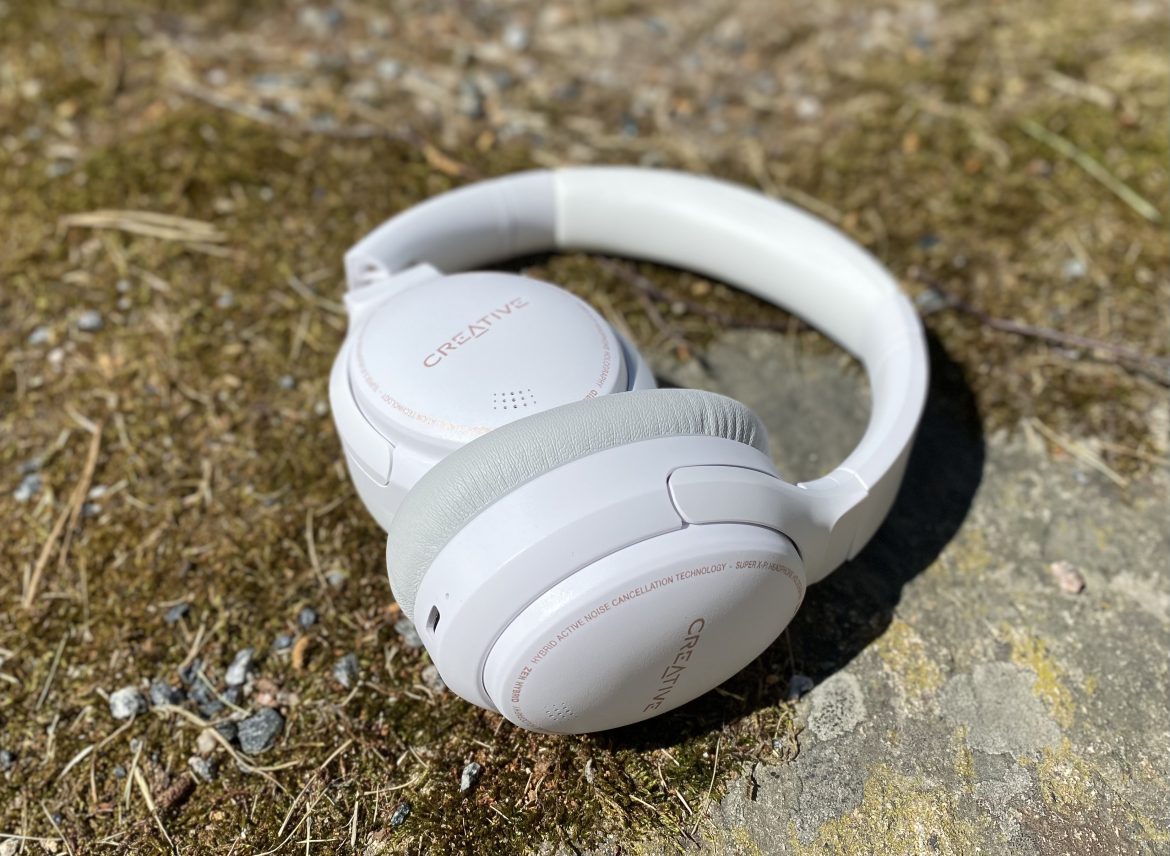TL;DR
These Creative Zen Hybrid headphones boast a sleek, Sony-inspired design and comfortable fit, offering decent sound quality after a burn-in period, especially for electro-pop. While Bluetooth is stable and battery life is good, the call quality is poor, and the proprietary SXFI sound customization is limited and technically flawed. They're an okay option if you like the look and are on a budget, but many competitors offer more consistent audio performance for the price. Ready to see if they're the right fit for you? Read on for the full breakdown.
Creative Labs has a history of releasing well-regarded audio products in both the speaker and headphone categories, although their success has been inconsistent. This review assesses the performance of the new Creative Zen Hybrid relative to its price point.
Upon unboxing the Creative Zen Hybrid, the design similarities to the Sony WH-XM41000 are immediately apparent. Aside from the white color and Creative logo, the visual resemblance, particularly in button placement, is striking. Drawing inspiration from established leaders is a common practice. The Zen Hybrid headphones are constructed entirely of plastic, presenting a reasonably sleek aesthetic. The build quality aligns with expectations for this price range; while not fragile, it lacks the robustness of more premium headphones with more substantial materials. The earcups’ synthetic leather and the overall fit are comfortable for average head sizes. Bluetooth 5.0 support provides a stable and extended range connection to the audio source, and the button placement is ergonomic.

A burn-in period is essential for optimal headphone performance, and the Creative Zen Hybrid exemplifies this. Initial out-of-the-box sound is noticeably thin, lacking in bass, and somewhat dull. However, after a 12-hour burn-in period using various playlists and pink noise, the audio quality improves significantly. The soundstage is generally commendable, although the power output could be stronger. Increasing the volume compensates adequately, delivering sound that is acceptable for its price category. Bass performance is inconsistent; the headphones perform well with bass-heavy tracks like A$AP Rocky‘s F**kin’ Problems, but can sound underwhelming and tinny with tracks like Fort Minor/Styles of Beyonds‘ Remember the name. Singer-songwriter tracks such as Tom McRae‘s The Boy with the Bubblegun sound decent overall but exhibit a slight muddiness, as if the sound is somewhat veiled. The headphones are most adept at reproducing electro-pop, such as UNDRESSD/Ellie May‘s Forever Young, where vocals are well-balanced, and bass response and details are clearly rendered. In summary, the audio quality is adequate for the price, performing well with certain genres and less so with others, even within the same genre.
Call quality can be characterized as unremarkable. The wearer can hear the other party clearly, but the outgoing audio quality is less satisfactory. The transmitted voice sounds tinny and distant, with noticeable digital distortion. This issue is exacerbated in windy outdoor conditions, rendering these headphones unsuitable for phone calls.
Creative utilizes a proprietary algorithm, SXFI, intended to optimize the sound based on individual hearing characteristics. This system is conceptually similar to Skullcandy‘s offering, but is less effective. Instead of audiometric testing, the SXFI system relies on three photographs: one of the left ear, one of the right ear, and one of the face. The software purportedly calculates an optimal sound profile based on ear shape and presumed cranial cavity dimensions. This approach lacks scientific rigor and presents practical challenges during setup. Capturing suitable ear images with a mobile phone requires assistance from another person to ensure correct framing within the app. Furthermore, the optimized sound profile is only accessible through a dedicated SXFI app, effectively creating a walled garden. This limits SXFI functionality to music and audio played directly through the app, preventing its use with services like Spotify on iOS. The system only supports local file playback (e.g., MP3s and local video files). The SXFI implementation feels incomplete. Ideally, it should function as a personalized EQ that programs a listening profile directly into the headphones, providing a consistent sound signature whenever the headphones are powered on wirelessly. The lack of a write function also suggests the absence of firmware update capabilities, which could significantly improve performance over time.

The ANC (active noise cancellation) performs adequately, and the Creative Zen Hybrid provides respectable battery life, approximately 25 hours with ANC enabled and roughly ten hours more with it disabled. The inclusion of USB-C charging and a carrying pouch is welcome.
Assessing the Creative Zen Hybrid is challenging. The headphone market is highly competitive, characterized by a vast selection of models across all price ranges and a generally high standard of quality, which Creative has contributed to. The value proposition of the Zen Hybrid is somewhat unclear. It may appeal to users seeking a headphone that emulates the aesthetics of the Sony WH-XM41000 at a lower price point. At 1000 SEK, the sound quality is generally commensurate with the investment, offering both wired and wireless connectivity. However, numerous compelling alternatives exist within the same price bracket, many of which offer superior and more consistent audio performance. Given the price, consumers may prefer to invest in high-quality TWS earbuds for greater portability or gaming headphones for enhanced versatility. The Creative Zen Hybrid offers acceptable performance for the price, but a more aggressive price point would enhance its appeal. While competent in some areas, it falls short in others. Despite the appealing white, Sony-inspired design, the overall experience, particularly in sound quality, aligns with the average expectations for its price range.
Creative Labs provided a test unit for this review. The source of review materials has no bearing on our editorial objectivity.
